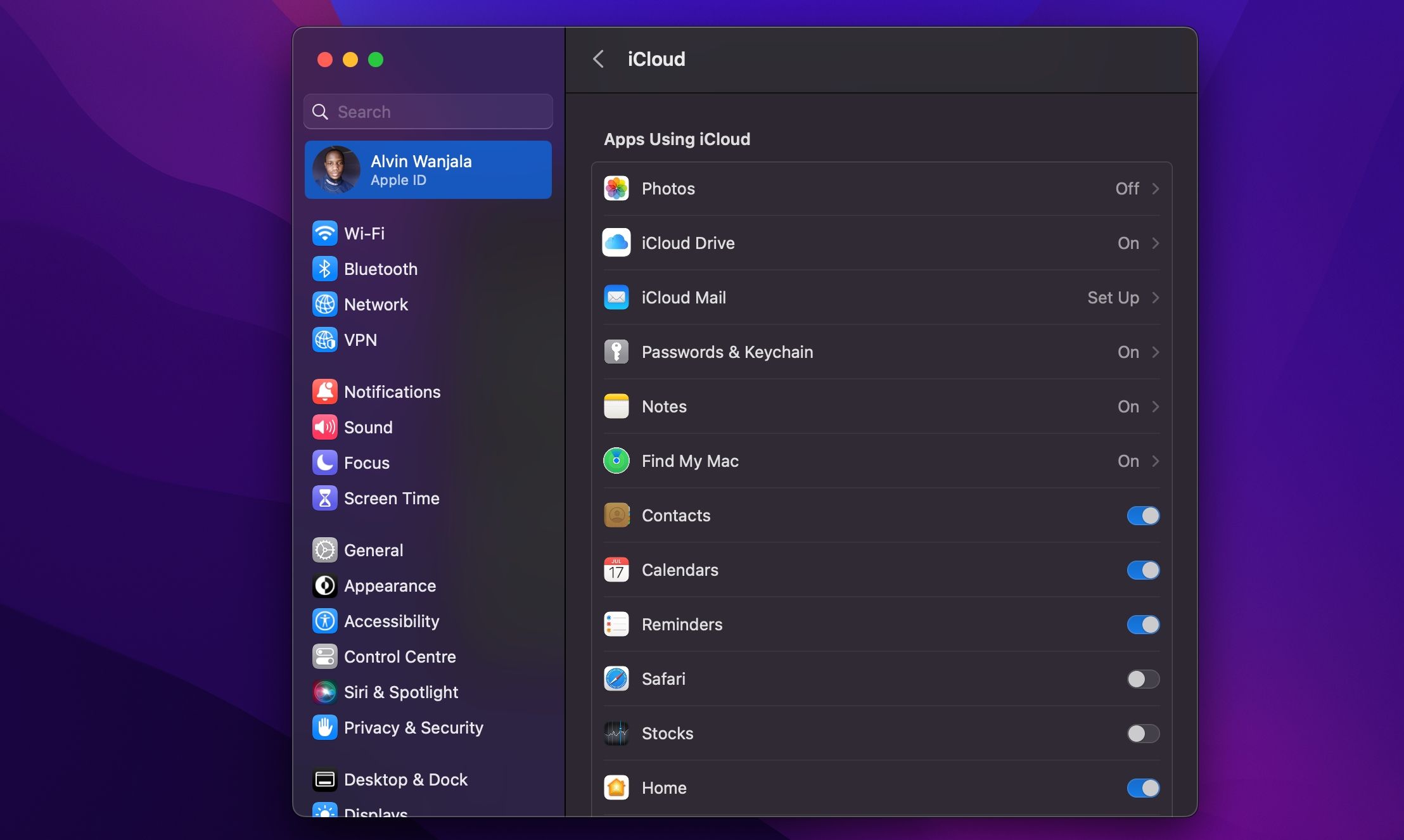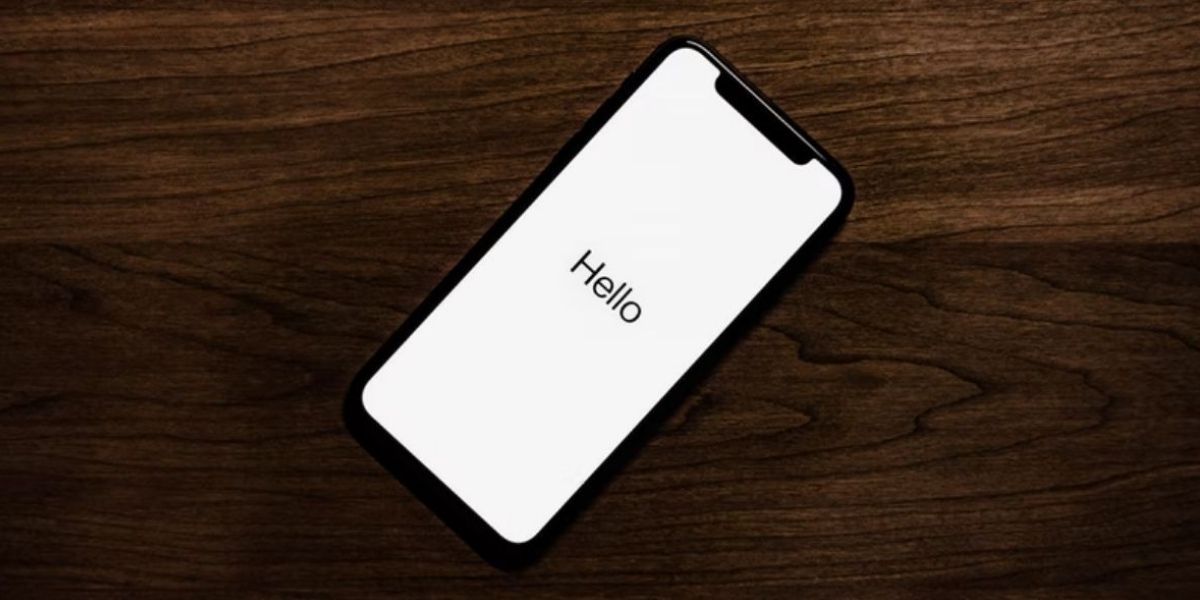iCloud Not Syncing? How to Solve iCloud Sync Issues
Fortunately, there are many fixes you can try to get your macOS, iPadOS, and iOS apps to sync with Apple's servers. Don't be afraid to try them all if the first few don't work out.
1. Restart and Wait
iCloud can take some time to kick in when you make a change. According to some reports, this can be up to 10 minutes.
You might find that your problem resolves itself with a bit of patience, but while you're at it, you can also try restarting all affected devices. You may also want to plug your device in—sometimes, photos won't sync to iCloud until your iPhone charges. You should also disable Low Power Mode if it's on because it turns off some battery-draining features.
On a Mac, iCloud not syncing might be because you have disabled Power Nap, which allows your device to check for iCloud updates while asleep. To enable it, open the Terminal app on your Mac and enter the following command:
<code class="hljs ">sudo pmset powernap 1</code>
2. Check You're Using the Right Account

It might sound obvious, but if you're not using the same iCloud account on both devices, then they'll never sync correctly. This might be the reason why iCloud on your Mac isn't syncing with your iPhone. Head to Settings > [Your Name] on iOS or Apple menu > System Settings > Apple ID on macOS and check which account is currently associated with the device.
You can only have one iCloud account signed in at a time, so make sure they match up. If they don't, you will need to sign out of the incorrect account and log in with the correct details.
3. Make Sure iCloud Is Working Properly

Every service experiences downtime at some point. While most planned outages occur at night, when you're asleep, catastrophic failure or human error can sometimes bring even the most reliable services down.
To check Apple's current iCloud status, head to Apple's System Status page and look for the green dots next to iCloud services. Any ongoing issues should appear at the bottom of the screen.
4. Ensure You've Enabled iCloud for Your App

There are some elements you can change in your Settings (iOS) or System Settings (macOS) in order to remedy apps that won't sync.
On your iPhone, head to Settings > [Your Name] > iCloud and tap Show All under Apps Using iCloud. Make sure the app you want to sync is listed and enabled. You can also try toggling this off and back on to force iCloud to sync.
Apps that have access to iCloud on your Mac will appear under Apple Menu > System Settings > Apple ID > iCloud under the Apps Using iCloud section. Click Show All to see the full list.
5. Check That Apps Have Cellular Access
Do you have trouble syncing to iCloud while on mobile data but not on Wi-Fi? You may have disabled cellular access for some apps.
Head to Settings > Cellular or Mobile Data and scroll down to find a list of apps on your phone. Any apps that have their slider turned off will only work on Wi-Fi. Try enabling data access for any apps you want to sync all the time, but note this may increase your data usage.
At the bottom of the screen, you may also want to enable iCloud Drive.
6. Rule Out Date and Time Discrepancies

You can run into a lot of problems when your iPhone's date and time aren't current. Many apps will simply refuse to connect to the internet at all. In order to avoid these problems, you can set the time to automatically update, which will keep your devices in sync and avoid these issues.
On your iPhone, head to Settings > General > Date & Time and toggle on Set Automatically. On a Mac, you can do this from System Settings > General > Date & Time and toggle on Set time and date automatically. After that, also check the box to Set time zone automatically using your current location.
7. Check That You're Syncing the Right Folder
For apps that allow you to customize which folder you use to store data, ensure that the paths match up in both instances. You should make sure that your various iOS and macOS apps are looking for data in the same location, if applicable.
8. Reset and Restore Your Device
If none of the above has helped, and your device won't access or sync iCloud data at all, you might want to take a stronger step and erase your iPhone to clear up any lingering issues. Before you proceed, make sure you back up your phone to avoid losing any data.
To reset and restore your iPhone, go to Settings > General > Transfer or Reset iPhone and select Erase All Content and Settings at the bottom.

You can restore your iPhone from a backup you made when you set up the phone afresh. Wait for the Apps & Data screen to load, tap Restore from iCloud Backup, then sign in with your Apple ID. Once you're finished, your device will be near-identical to how you started, except you'll need to add or authorize your various accounts again.
Hopefully, this will clear up whatever issue you had with iCloud Drive. If it still doesn't work, check out some of the most common iCloud issues and how to fix them.
9. Look Into App-Specific Support
If you've got an app that uses data syncing to transfer between different platforms, there's a good chance the developer offers help documentation to help you overcome your issues. Most of the time, developers can pinpoint the exact files and folders you should delete in order to solve your issue.
A few apps that include specific guides to solving iCloud issues include Day One, 1Password, and Ulysses. Search online for specific help if your issue lies with another app.
10. Use an iCloud Alternative
Many applications give you a choice of whether or not to use iCloud. If you can avoid using it, you'll sidestep many of the issues that have plagued the service.
For example, apps like Day One and 1Password both allow you to use Dropbox. Plus, iCloud alternatives often provide you with more space and less hassle. And don't worry; you can still use other iCloud features like Find My and iCloud email accounts.
Some of the best cloud storage alternatives include Dropbox, Google Drive, and OneDrive.
Sync Your iCloud Data Without Issues
Hopefully, these tips helped you clear up your iCloud Drive issues; most users have reported that one of these tips helped to get them back on track. While iCloud isn't perfect, its integration with Apple platforms makes it the de facto choice for many users. Now, you can enjoy it as Apple intended.
The above is the detailed content of iCloud Not Syncing? How to Solve iCloud Sync Issues. For more information, please follow other related articles on the PHP Chinese website!

Hot AI Tools

Undresser.AI Undress
AI-powered app for creating realistic nude photos

AI Clothes Remover
Online AI tool for removing clothes from photos.

Undress AI Tool
Undress images for free

Clothoff.io
AI clothes remover

Video Face Swap
Swap faces in any video effortlessly with our completely free AI face swap tool!

Hot Article

Hot Tools

Notepad++7.3.1
Easy-to-use and free code editor

SublimeText3 Chinese version
Chinese version, very easy to use

Zend Studio 13.0.1
Powerful PHP integrated development environment

Dreamweaver CS6
Visual web development tools

SublimeText3 Mac version
God-level code editing software (SublimeText3)

Hot Topics
 1666
1666
 14
14
 1425
1425
 52
52
 1328
1328
 25
25
 1273
1273
 29
29
 1253
1253
 24
24
 Fix your Mac running slow after update to Sequoia
Apr 14, 2025 am 09:30 AM
Fix your Mac running slow after update to Sequoia
Apr 14, 2025 am 09:30 AM
After upgrading to the latest macOS, does the Mac run slower? Don't worry, you are not alone! This article will share my experience in solving slow Mac running problems after upgrading to macOS Sequoia. After the upgrade, I can’t wait to experience new features such as recording and transcription of voice notes and improved trail map planning capabilities. But after installation, my Mac started running slowly. Causes and solutions for slow Mac running after macOS update Here is my summary of my experience, I hope it can help you solve the problem of slow Mac running after macOS Sequoia update: Cause of the problem Solution Performance issues Using Novabe
 How to reduce WindowServer Mac CPU usage
Apr 16, 2025 pm 12:07 PM
How to reduce WindowServer Mac CPU usage
Apr 16, 2025 pm 12:07 PM
macOS WindowServer: Understanding High CPU Usage and Solutions Have you noticed WindowServer consuming significant CPU resources on your Mac? This process is crucial for your Mac's graphical interface, rendering everything you see on screen. High C
 How to type hashtag on Mac
Apr 13, 2025 am 09:43 AM
How to type hashtag on Mac
Apr 13, 2025 am 09:43 AM
You can’t really use the internet nowadays without encountering the hashtag symbol that looks like this — #. Popularized on a global scale by Twitter as a way to define common tweet themes and later adopted by Instagram and other apps to c
 Image to text: How to extract text from pictures on Mac
Apr 13, 2025 am 10:06 AM
Image to text: How to extract text from pictures on Mac
Apr 13, 2025 am 10:06 AM
If you need to quickly extract text from images but you don’t know how, it might bring your workflow to a halt. It’s better to be prepared and know how to automatically recognize text inside the screenshot, capture text from video, or copy an er
 Mac Disk Utility: How to Repair Disk with First Aid? How to Recover It?
Apr 13, 2025 am 11:49 AM
Mac Disk Utility: How to Repair Disk with First Aid? How to Recover It?
Apr 13, 2025 am 11:49 AM
You might need to repair your Mac disk if your computer won’t start up, apps keep freezing, you can’t open certain documents, or the performance has slowed to a halt. Luckily, Apple includes a handy tool you can use to
 How to delete files on Mac
Apr 15, 2025 am 10:22 AM
How to delete files on Mac
Apr 15, 2025 am 10:22 AM
Managing Mac storage: A comprehensive guide to deleting files Daily Mac usage involves installing apps, creating files, and downloading data. However, even high-end Macs have limited storage. This guide provides various methods for deleting unneces
 How to Remove OneDrive from Mac? How to Uninstall It on Apple Laptop?
Apr 16, 2025 am 11:02 AM
How to Remove OneDrive from Mac? How to Uninstall It on Apple Laptop?
Apr 16, 2025 am 11:02 AM
OneDrive for Mac: A Comprehensive Uninstall Guide OneDrive, Microsoft's cloud storage service, offers online file storage and synchronization across various platforms, including Mac. However, you might need to remove it for storage optimization, inc
 How to delete iOS apps from Mac with M1
Apr 14, 2025 am 11:26 AM
How to delete iOS apps from Mac with M1
Apr 14, 2025 am 11:26 AM
Since Apple's first iPad was released in 2010, it has begun designing its own chips for its devices. The latest iteration of chips is the Apple A15 bionic chip on the iPhone 13. However, for Mac, the first Apple self-developed chip, the Apple M1, was not released until 2020 with the MacBook Air, Mac mini and MacBook Pro. In 2021, the 24-inch iMac followed closely, followed by improvements on the 14-inch and 16-inch MacBook Pro (as the Apple M1 Pro and A




